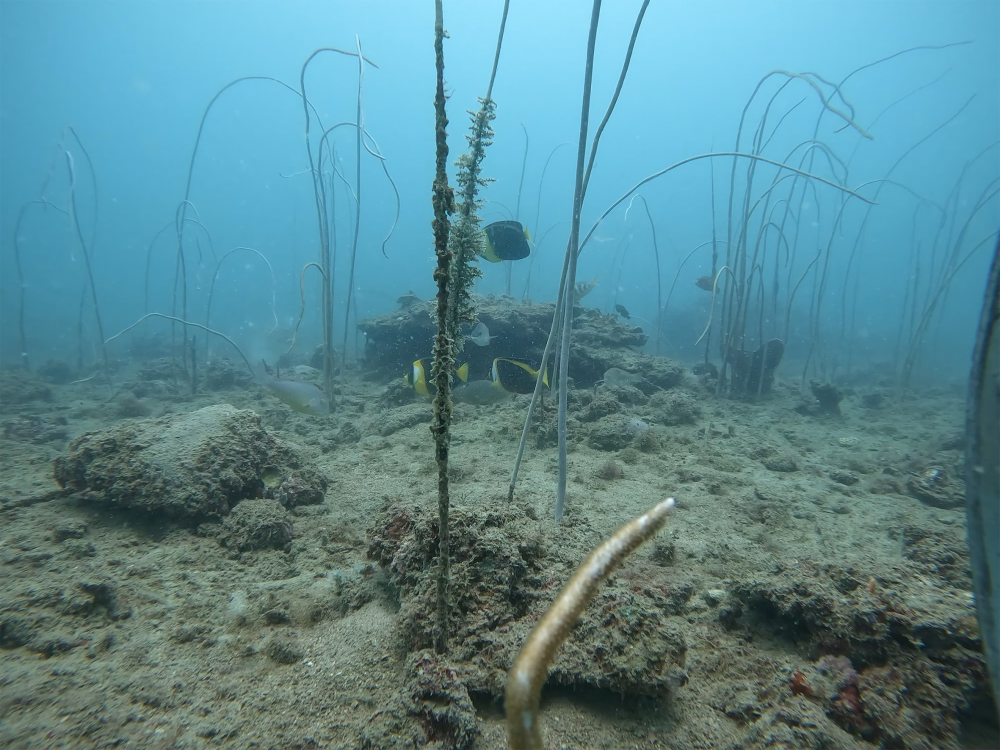Benthic Habitats of Marra Sea Country - Gulf of Carpentaria
 Marra land and sea country includes coastal waters in the southern Gulf of Carpentaria in the Northern Territory. The Limmen Marine Park (Commonwealth Government) and the Limmen Bight Marine Park (NT Government) are in Marra country. The co-management aspirations identified within the two Marine Park Plans of Management and the Marra Healthy Country Plan include a need to improve information on habitats and key species because they have not been previously mapped.
Marra land and sea country includes coastal waters in the southern Gulf of Carpentaria in the Northern Territory. The Limmen Marine Park (Commonwealth Government) and the Limmen Bight Marine Park (NT Government) are in Marra country. The co-management aspirations identified within the two Marine Park Plans of Management and the Marra Healthy Country Plan include a need to improve information on habitats and key species because they have not been previously mapped.
Benthic habitat surveys in the Limmen Marine Park and the Limmen Bight Marine Park were co-designed by li-Anthawirriyarra Rangers and scientists. Habitats were assessed at 2072 sites during October 2021, with a primary focus on seagrass. Intertidal habitats were surveyed using a helicopter to assess the large, exposed banks, islands and reef tops. For subtidal waters a combination of drop and towed cameras, van Veen grabs and benthic sleds were used for surveys. Benthic habitat data were recorded in real time for sites surveyed by drop video, while more detailed assessments were conducted for the 54 sites surveyed using recorded towed video footage. At each site, a visual estimate of seagrass, as well as benthic macroinvertebrates, algae and open substrate were made.
Seagrass was found at 21% of the sites surveyed the majority of which were within the coastal strip. These formed a meadow 65 km long to 9.7 m depth below mean sea level, extending 7–8 km from shore and including areas of very high seagrass biomass. Seagrass also occurred to depths of 21.1 m within the Limmen Marine Park. Eighty species of mobile (non-habitat forming) and sessile (habitat-forming) invertebrate species were identified. Soft corals, hard corals and sponges formed habitat through much of the Limmen Marine Park and Limmen Bight Marine Park, though all became sparser as distance from the coast increased. Coral reefs fringed the eastern and southern sides of Maria Island. Ascidians, crinoids, and hydroids were also present and so dense at some sites that they dominated the benthic communities. This information is essential for natural resource planning and to establish a monitoring program that incorporates Traditional Owner knowledge, values, and western scientific knowledge.
Near-term priorities include identifying synergies in goals and management frameworks in adjacent sea country and ways to support eachother, improving understanding of environmental pressures and threats, identifying deficiencies in areas of protection in the Gulf of Carpentaria and supporting a Marra-led zoning scheme. Marra Traditional Owners and custodians have also expressed a need for monitoring important cultural places, species that are culturally and socio-economically important and habitats that support them. It's important that a Marra person is funded to progress these aspirations and that families and kids are given an opportunity to be a part of cultural learning on country.
This work was done in collaboration between the li-Anthawirriyarra Rangers, Marra custodians, Scientists from Charles Darwin University and James Cook University and Northern Territory Government.

For more information: Collier C.J., Carter A., Shepherd L., van de Wetering C., Coles R., Evans S., Barrett D., Willan R.C., Groom R. (2022) Benthic habitats of Marra Sea Country - Gulf of Carpentaria. Centre for Tropical Water & Aquatic Ecosystem Research (TropWATER) Report Number 22/40, James Cook University, Cairns, 75 pp.
This Our Marine Parks Grant project received grant funding from the Australian Government.
